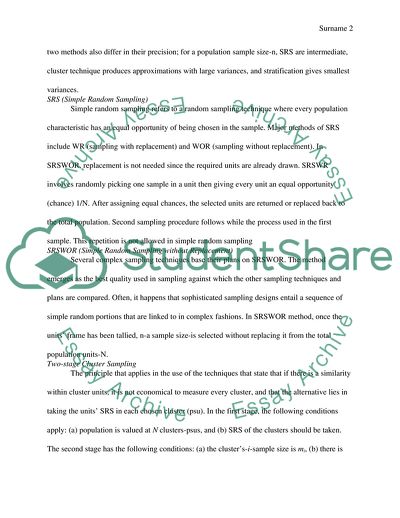Cite this document
(A Comparison among SRSWOR, Stratified SR-SWOR, Single Stage Cluster Statistics Project Example | Topics and Well Written Essays - 1750 words, n.d.)
A Comparison among SRSWOR, Stratified SR-SWOR, Single Stage Cluster Statistics Project Example | Topics and Well Written Essays - 1750 words. https://studentshare.org/statistics/1817597-final-project
A Comparison among SRSWOR, Stratified SR-SWOR, Single Stage Cluster Statistics Project Example | Topics and Well Written Essays - 1750 words. https://studentshare.org/statistics/1817597-final-project
(A Comparison Among SRSWOR, Stratified SR-SWOR, Single Stage Cluster Statistics Project Example | Topics and Well Written Essays - 1750 Words)
A Comparison Among SRSWOR, Stratified SR-SWOR, Single Stage Cluster Statistics Project Example | Topics and Well Written Essays - 1750 Words. https://studentshare.org/statistics/1817597-final-project.
A Comparison Among SRSWOR, Stratified SR-SWOR, Single Stage Cluster Statistics Project Example | Topics and Well Written Essays - 1750 Words. https://studentshare.org/statistics/1817597-final-project.
“A Comparison Among SRSWOR, Stratified SR-SWOR, Single Stage Cluster Statistics Project Example | Topics and Well Written Essays - 1750 Words”. https://studentshare.org/statistics/1817597-final-project.


